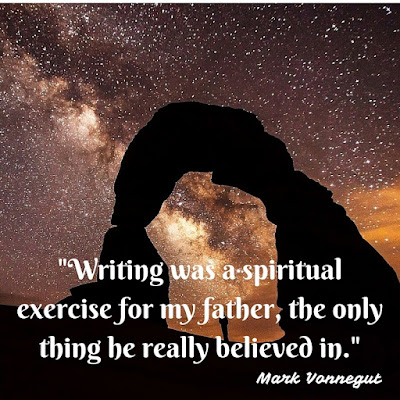Writing for me is a spiritual exercise. I did not realize this until I read an essay several years ago in which Mark Vonnegut talks about his father, Kurt, one of my favorite authors. This quote opened for me the door into why I have spent 40 years writing without fame or fortune.
Since I rejected organized religion and experienced a spiritual crisis at age 18, writing became the spiritual road I walked. Writing gave my soul the courage and strength necessary to face the traumas of this world. I was called to be a preacher but I could not preach until I first cleansed my soul and made it strong through writing.
The writing is what makes me whole, gives meaning to my life, and keeps me believing even when I feel there is nothing left to live for. Writing is my spiritual path, my meditation and my gift of prayer.
What roads have you traveled? What paths have you taken? Have you questioned your faith or simply accepted the beliefs taught you as a child? Is your art a spiritual path that you have wandered down?
Here are several of my spiritual poems.
Many do not understand my form of spirituality. I do not fit into any mold or preconceived notion of what religion is or should be. For some I am a sinner lost in the world. Others ask why do you speak of God? He does not exist?
For me, my salvation is in my ability to question — in my gift of doubt. I walk the path of the doubting Thomas. I shoulder the burden of uncertainty. I live at the edge of chaos and thrive.
I ponder the question of why we are here — of what is the meaning of life. I receive no answers, only more questions. I choose to listen to the languages of God and wait for His Word. I walk the path of no regret.









